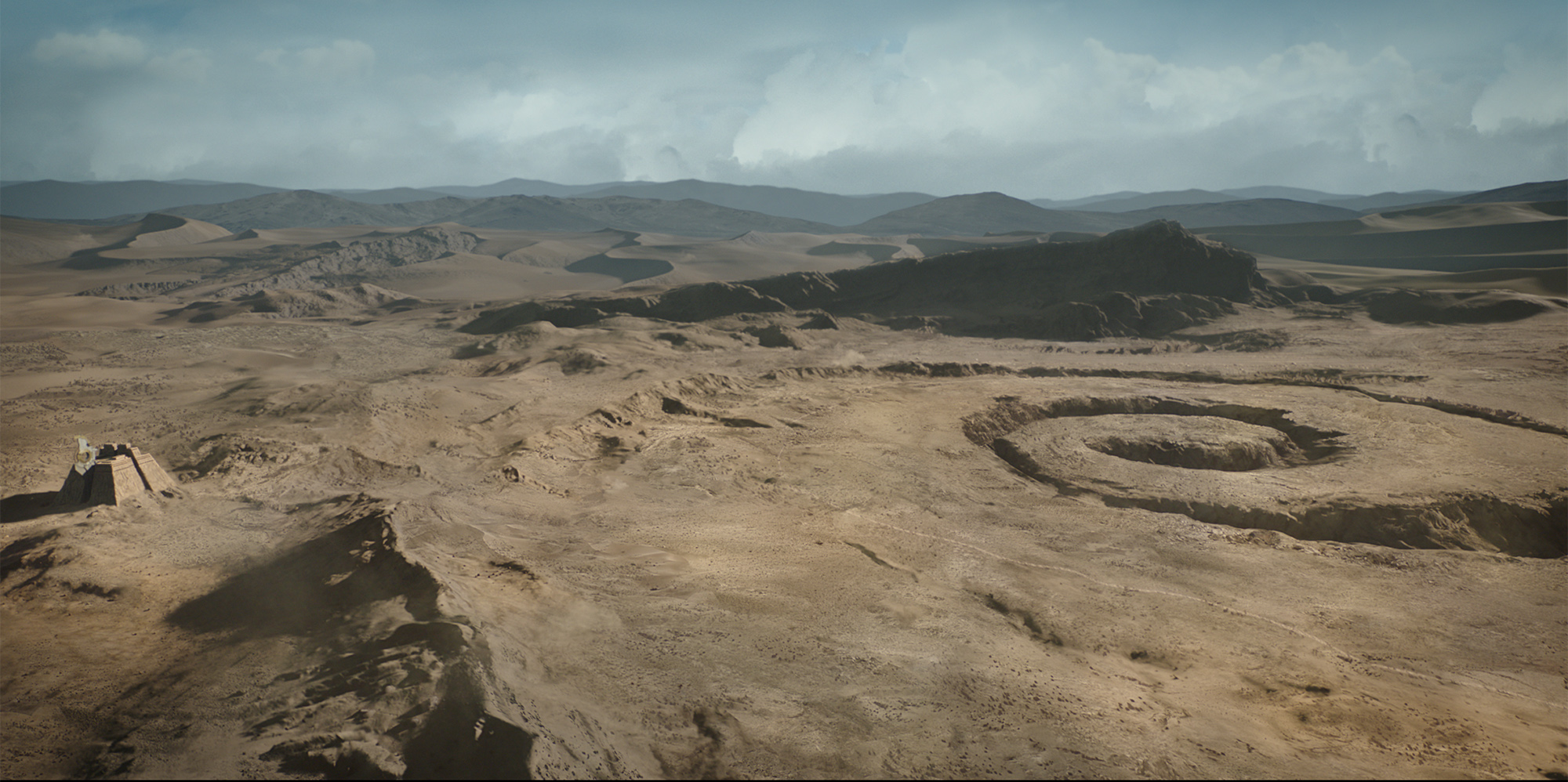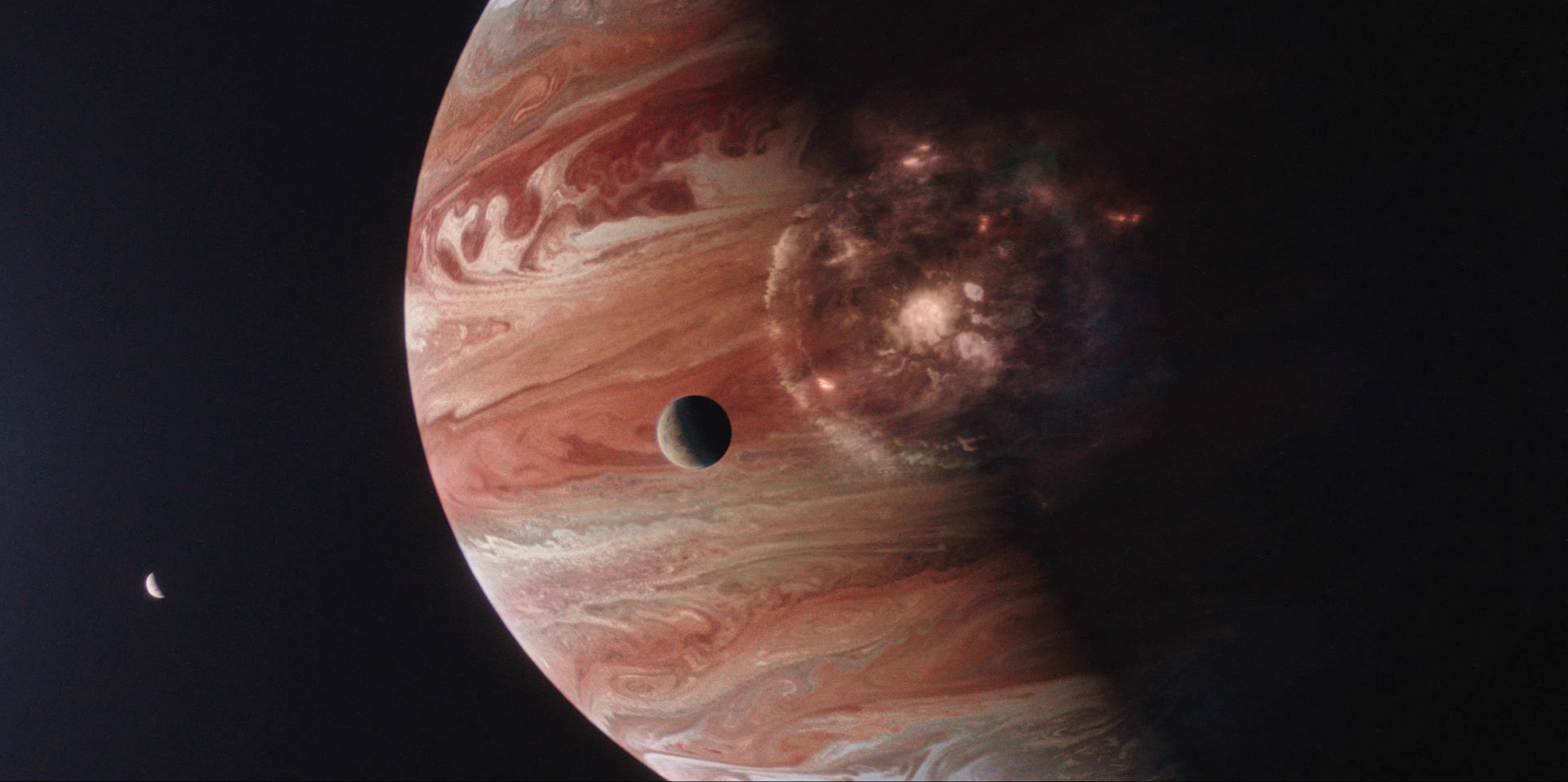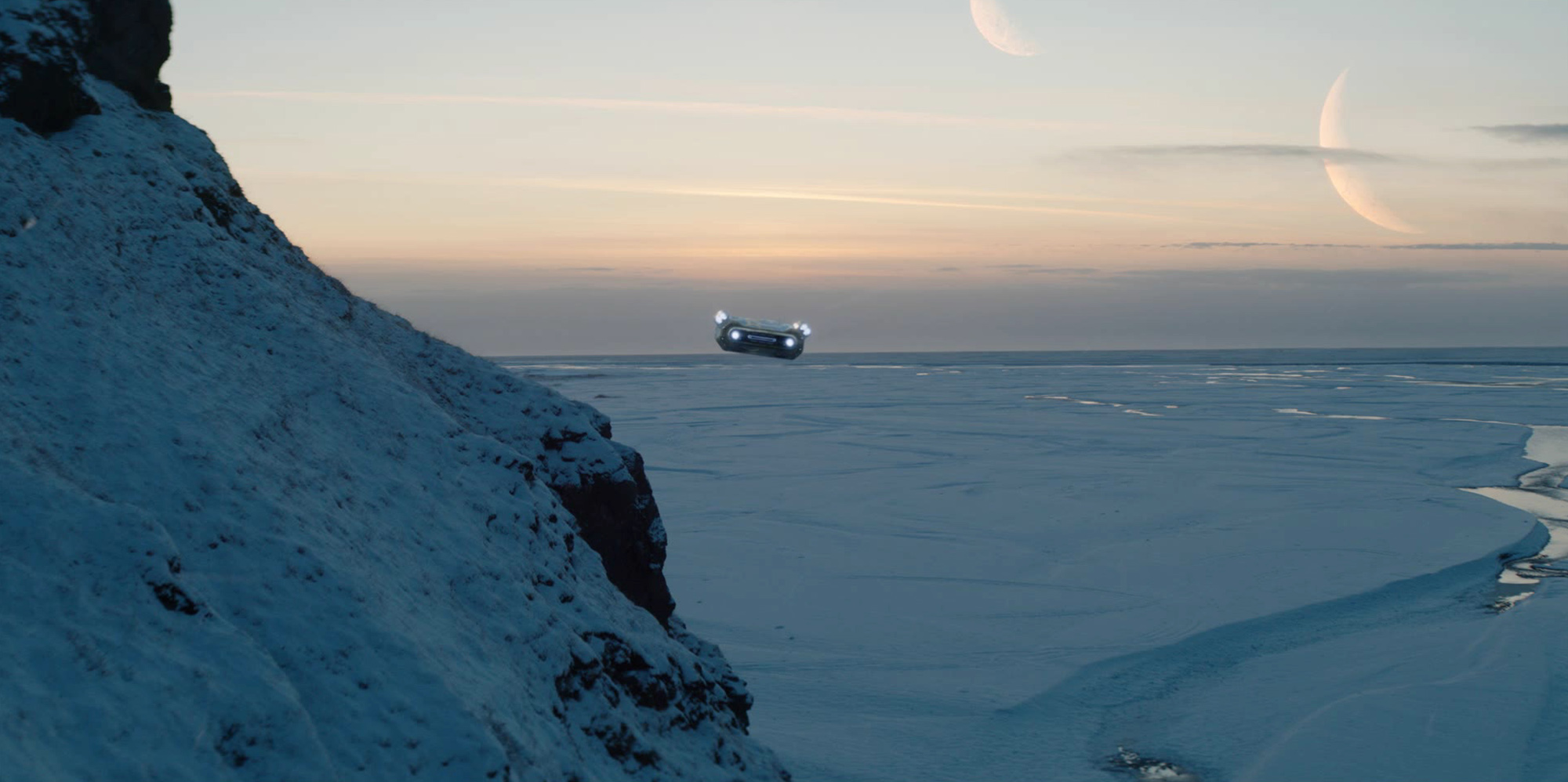Be the first to know — Get Outpost's monthly newsletter for news, tips and job opportunities.
News
Foundation: Creating Fantasy Environments for Asimov's Sci-fi Epic
Behind the scenes of some of the extensive environment work the Outpost VFX team took on for this adaptation of Foundation.
Isaac Asimov’s award-winning series ‘Foundation’ inspired a generation of science fiction after its release in 1942 and continues to ignite the imagination of many.
Among the inspired is director David S. Goyer (Blade, Batman Begins), who successfully pitched Foundation as a streaming series. To help bring his vision to life, Goyer enlisted the help of our environments team to create the multiple solar systems within which the story takes place. Hope Brackin and her team were challenged to create the environments that Foundation fans know and love, translating Asimov’s work into something tangible, visually stunning, and somewhat recognisable on screen.
Treading the line between exercising the limitless possibilities of space environments, and creating something that’s not too jarring or unfamiliar, the team used DMP and full CG environments for Foundation.
We sat down with Hope Brackin (Lead Environment Artist), Jake Cohen (Mid Generalist), Anissa Senoussi (Lead Environment Artist), Borja Gonzalez (Mid Environment Artist), Shitian Qui (Junior Environment Artist) to discuss the creative challenges that Foundation presented.
Want to work on projects like Foundation? Take a look at our careers page for our latest opportunities!
What was the scope of work for the environments in Foundation?
Hope: Most of our environment work for Foundation was at each end of the spectrum; we were either doing full on CG environments, or we would work on an environment just a touch where you wouldn’t know we’d done anything. There seemed to be very little in between!
As the show takes place in space, there were a number of interesting shots of moons and planets which were fully CG, for example the Maiden Moon with the intricate spiral landscape and palace – that was all CG.
Anissa: We used a good mix of 2D and 3D for these environments. For example, the Maiden planet and Cleon Hallway were mostly 3D. The DMP team would the work from the CG renders to add a bit more detail. Digital matte painters also took care of the sky domes for sequences on Maiden Moon and Synnax.
Synnax Village was a mix of 2D and 3D. I did the layout in Maya using cleaned LIDARs from the set. Once we were happy with the placement, scale and lighting, I proceeded to do the DMP for the background. For these, I exported several layers and then projects and pre-comped in Nuke.
You had a number of plates for the Maiden Moon surface. Were these used as reference or were they kept in the final version?
Hope: The plates were only used for reference; they helped to guide the look and feel of the terrain. This was needed as they were some wide shots where both the CG and the plates had to meet. DMP did an incredible job in blending these two worlds. The final touches done by DMP is what truly completed the shots and brought them to life.
What kind of challenges come with working with full CG environments?
Hope: Often with full CG, it can be challenging to interpret and communicate the vision. For example, we had the concept art as a reference point in the beginning, but then you also have the plates shot in New Mexico for the detail of the terrain, plus what’s been communicated to you verbally. So as the lead, it was my job to try and put it all together and communicate this to my artists who were working remotely, and not only remotely but also in various time zones.
Also, the environments we were working on were massive, so you have to keep in mind the big picture and not look too much at the little things.

Jake: I think, for me, the Maiden Moon environment with the spiral desert landscape was the biggest physical thing that I’ve worked on and working on the surface of an asset that big was definitely a unique challenge. Most of my background has been working on set extensions and invisible FX – like time period changes, for example – so working on such a huge landscape and wrapping my head around that was new to me. I’d never worked on the ground before. You start asking questions you’ve not really thought too much about, like ‘what does the ground look like?’ There’s a lot of detail that goes into that.
Anissa: Also, there were a series of technical challenges involved in the Maiden Moon. Photoshop is not able to work in High Dynamic Range so it can be really tricky sometimes to work within a VFX pipeline using colour profiles. On one shot in particular, the colours would completely change in Photoshop when zooming in and out of the documents. I ended up doing the whole colour check in Nuke using roto masks.
Shitian: Blending all the surface materials in full CG environments is also a key feature we needed to get right. For example, the Maiden Salt Palace; there were so many different camera angles and close-ups, it was important that the palace was clear enough in all of these shots.
What tools were used to create the landscape and terrain of the Maiden Moon?
Hope: We used everything available to us. Often with environments we would receive a LIDAR of the set so we have a basis of the real-world scale to build on but with the Maiden Moon, obviously this was impossible. However, we did have a scan of the location that was used as the top of the palace so that was our starting ground. Instead of immediately sculpting, though, Houdini was the next step because it was easy for me to quickly bash out the size and scale of the terrain and the placement of the mountains and spiral which were all in the concept art.
When everyone was happy, we then moved on to sculpting and Borja did an amazing job at sculpting all the intricacies of the organic shapes of the dunes against the hard edges of the rocks. It was a hero asset, so it needed proper love and dedication.
Borja was taking care of that while Shitian worked on the palace. We then had to blend both the look of the plates of the palace with the CG and the terrain that Borja was sculpting and the abstractness of the concept, so Jake came in and blended them all together to create one look and feel.

Jake: Most of the terrain work was done in Houdini, while most of the blending I did was in Maya, and I used Substance Painter here and there to help create different masks and mattes to blend all the different materials and textures together.
Borja: For the sculpting I used ZBrush, as well as Photoshop and Nuke for matte painting and camera projections. For the terrain it was a challenge to introduce the detail, so I ended up building a library of brushes.
Were there any themes or references you had to keep in mind for the shots overall?
Jake: As far as the terrain goes, we were working on the plates that were shot in New Mexico, so we would look back at images of the terrain there and think ‘what kind of sand is this? What kind of gravel? What kind of rock? How much vegetation would be in that kind of desert?' It had to kind of look like New Mexico because that’s where they shot it, but also it had to not look like anything too recognisable because it’s supposed to be another planet, so it was blending those spaces together that was the tricky part; trying to work with the reference while injecting creativity and not making it too similar.
Foundation was the first time I’ve worked on sci-fi, and it definitely gives you that extra degree of freedom as you have the opportunity to do something that feels real but is new. When working on invisible VFX we’re always working from real-world references and trying to mimic them closely, whereas when you’re working on sci-fi there is no real limit. It’s not that it doesn’t have to be perfect, it’s more that it has to be something different.
Borja: When it comes to sci-fi, there are things people expect to see I think, because looking at science fiction in the 80s, it often looks the same because they were usually made by the same artists – people like Syd Mead and so on – but now we are on a different level. I love science fiction, but it seemed like people stopped making sci-fi for a while and so now it is almost like a new thing because technology affords us more creative ability, and so there are no rules on how to do new sci-fi visuals.

Hope: That’s what’s really cool about working with space; you really have no limits (no pun intended), but you have to stay within the limits of what people are comfortable with. It’s a very fun challenge where you can be playful and experiment. Often in these cases you end up pushing too far, but in my mind this is a good thing because it’s always easier to go back, and you feel more comfortable being more creative and taking a leap. I always think it’s better to go all in, go crazy, and then go back.
Jake: It almost feels like sometimes you have to push it too far; a lot of the time the client wants it to go further than you would expect it to go.
Hope: And a lot of times, they actually like what you do when you think you’re pushing it too far. That’s what happened with the Spiral on Maiden Moon; the extreme one was the one the client wanted. I just did it to a ridiculous scale and they were like ‘yes that’s the one’ and I was shocked! As artists, I think it’s important for us to work without worrying about doing too much. When you’re an artist, you want to express yourself how you want to but actually you have to follow the directives of what the client wants and what is expected of you, so you have to find a way to still have fun and still go all in, maintaining what you want and still delivering what is expected of you.
What role did DMP play in the making of Foundation?
Jake: With the timeframe that we had, we didn’t have enough time to do every little rock, every little pebble, and every bush and every detail in CG, and it’s not feasible to do it that way. So we were able to push it as far as we could with Borja sculpting it and me putting texture and materials on top of it – there was only so far the two of us could get in doing it that way with the time that we had – and so the whole sleugh of DMP artists to be able to paint all that extra love and all that extra detail was really what sold it.
Anissa: Working on the DMP for Foundation really was a pleasure. One of my favourite sequences I worked on was the Synnax sequence. I did some sky concepts for the night sky with the luminescent planet rings, I love this type of work where we keep things looking photoreal but with a fantastical / magical element.

The Synnax village DMP was also great because I love the opportunity to instil a little bit of storytelling in my work. When working on villages and cities I imagine the people living there; who are they, what is their life like, are they lonely, do they live with family, maybe they have a cat which likes to sit in the window, maybe they like to have flowers on the balcony, maybe they like to walk and they would keep their boots by the door… little ideas that can bring a bit of soul into a village or city shot.
Foundation is available to stream now. To read more on Foundation, visit our Foundation Project Page.




